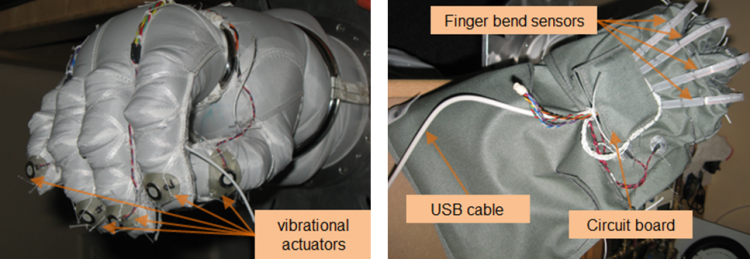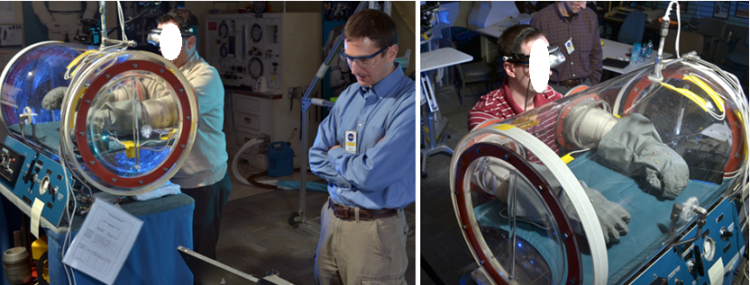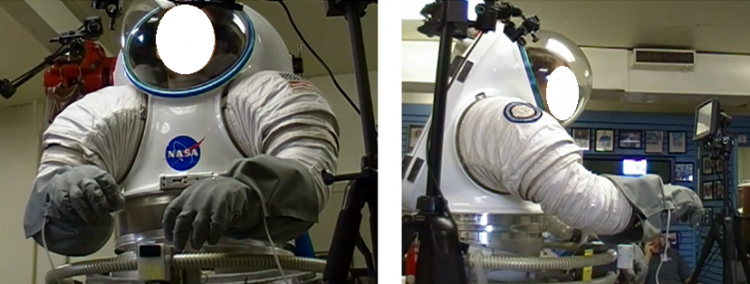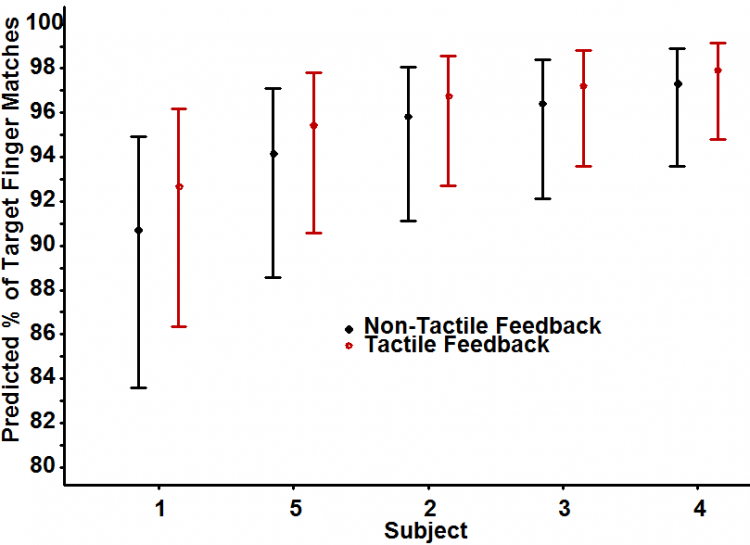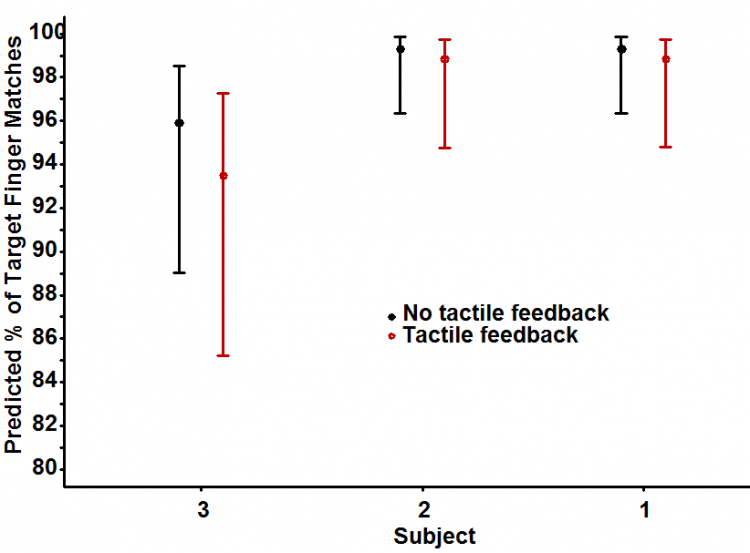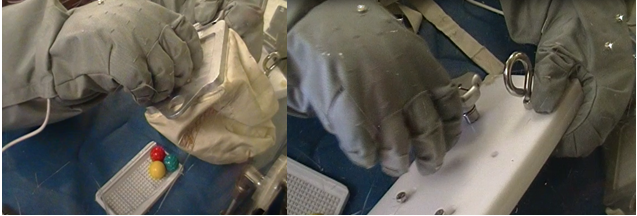Glove-Enabled Computer Interactions
Future space suits may be equipped with on-board computing, networking, and helmet-mounted graphical displays to provide astronauts with access to some of the same “apps” that terrestrial smart phone users now take for granted. These may include textual and voice communications, map-based navigation, video/image acquisition, document viewing/editing, and news/weather alerts. Unfortunately, bulky space suit gloves make it impractical to use conventional user interfaces such as a touch screen, keyboard, or mouse. Astronautics will need the functional equivalent of these interfaces to provide the point-and-click and rapid textual/numeric data entry capabilities that these applications require.
The patent-pending Glove-Enabled Computer Operations (GECO) design leverages extravehicular activity (EVA) glove design features as platforms for instrumentation and tactile feedback, enabling the gloves to function as human-computer interface devices. Flexible sensors in each finger enable control inputs that can be mapped to any number of functions (e.g. a mouse click, a keyboard strike, or a button press). A camera tracks hand translation, which is interpreted alternatively as movement of a mouse (change in cursor position on a graphical user interface) or a change in hand position on a virtual keyboard. Programmable vibrotactile actuators aligned with each finger enrich the interface by creating the haptic sensations associated with control inputs (e.g. recoil of a button press).
Prototype GECO gloves, developed in collaboration with Flagsuit LLC and the University of Washington Biorobotics Laboratory, were successfully evaluated in two separate test campaigns in the Advanced Suit Laboratory (ASL) at NASA Johnson Space Center (JSC).
In January 2013, five participants used GECO gloves to perform data entry and manual EVA tool-use tasks in an ASL glove box;
In June 2013, three NASA subjects employed the GECO gloves under pressurized conditions in the Mark III Advanced Suit Demonstrator.
In both test events, subjects averaged greater than 95% accuracy in using the instrumented gloves to generate desired button strikes. With little training, subjects were also able to effectively use the gloves for text data entry employing a virtual keyboard.
In Likert-scale questionnaires, subjects unanimously asserted that GECO components did not adversely impact manual glove function and that the added elements had no adverse impact on conventional EVA tool use.
GECO Videos
Video: Suited testing at NASA JSC. Subject using GECO glove in hunt-and-peck texting.
Video: GECO glove used to emulate touch typing.
Video: GECO user playing a Simon Says game to demonstrate use of glove.
Video: User employing GECO gloves to “free style.”
Acknowledgements
We gratefully acknowledge the support of NASA Glenn Research Center. Work on the GECO System was performed under contract NNX11CA55C. We also gratefully acknowledge the test coordination and on-site support provided by the NASA Johnson Space Center Crew and Thermal Systems Division, Space Suit and Crew Survival Systems Branch.
References
Adams, R.J., Olowin A., Krepkovich, E., Hannaford, B., Lindsay, J., Homer, P., Patrie, J., and Sands, O.S., “Glove-Enabled Computer Operations (GECO): Design and Testing of an Extra-Vehicular Activity Glove Adapted for Human-Computer Interface,” in Proceedings of the AIAA International Conference on Environmental Systems, AIAA-2013-3459, Vail, CO, 2013.
Adams, R.J., Olowin A., Patrie, J., and Homer, P., “Mark III Space Suit Testing of Glove-Enabled Computer Operations (GECO),” to appear in Proceedings of the AIAA International Conference on Environmental Systems, Tucson, AZ, 2014.

